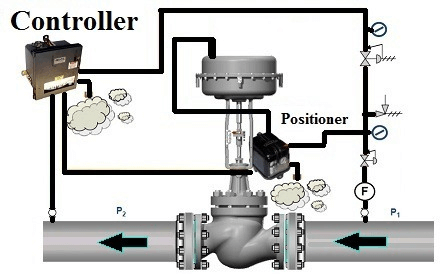Recognizing the Relevance of Control Valves in Process Automation
Recognizing the Relevance of Control Valves in Process Automation
Blog Article
Maximize Energy Savings and Convenience With Advanced Structure Automation Controls
In the world of modern-day design and facility monitoring, the assimilation of innovative building automation regulates stands as an essential advancement. By utilizing the power of automation, buildings can adjust, react, and progress in ways that were when unimaginable.
Energy Efficiency Advantages
Power effectiveness advantages can dramatically decrease energy consumption and operational expenses in buildings. Energy-efficient systems, such as innovative structure automation controls, can optimize the usage of sources like lights, home heating, and cooling, leading to lower energy expenses over time.
Moreover, boosted energy efficiency can lengthen the life expectancy of building tools and systems. By running much more effectively, HVAC systems, lighting fixtures, and various other building parts experience much less deterioration, resulting in lowered maintenance and substitute expenses. In addition, energy-efficient buildings frequently regulate higher home worths and rental rates, providing long-lasting financial advantages to proprietors.
Additionally, power efficiency can boost resident convenience and performance. Correctly managed indoor settings with optimal illumination and thermal problems create a more favorable and pleasant office, leading to enhanced staff member complete satisfaction and efficiency. Overall, the energy effectiveness advantages related to sophisticated structure automation controls are multifaceted, including price financial savings, environmental stewardship, and owner well-being.
Boosted Comfort Control
Enhancing comfort control in structure settings calls for a sophisticated combination of sophisticated automation systems for optimum owner well-being. By utilizing sophisticated structure automation controls, centers can customize the interior atmosphere to fulfill the certain needs and choices of passengers. These systems make it possible for precise regulation of air flow, lights, and temperature level, developing a efficient and comfy environment. Passenger contentment and performance are very closely connected to thermal convenience, making it necessary to have systems in place that can adjust to transforming problems in real-time.
Enhanced comfort control surpasses fundamental temperature changes. It consists of functions such as individualized settings, tenancy sensing units, and natural light application to develop a responsive and dynamic setting. By incorporating these innovative controls, structures can not only boost comfort but additionally enhance energy performance by enhancing system procedures based on real occupancy and use patterns. Ultimately, focusing on resident convenience through sophisticated automation systems leads to an extra pleasurable and much healthier indoor atmosphere.
Operational Effectiveness Improvements

Additionally, the implementation of real-time tracking and analytics tools allows structure operators to determine power inadequacies and operational abnormalities without delay. By constantly keeping track of power usage patterns and system efficiency metrics, changes can be made in real-time to optimize energy intake and ensure peak operational effectiveness. control valves. In addition, including demand reaction methods into building automation controls can additionally boost operational effectiveness by dynamically readjusting power usage based on grid conditions and pricing signals
Indoor Environment Optimization
Reliable interior environment optimization is a fundamental aspect of building automation controls, making sure owners' comfort and wellness while maximizing energy savings. By utilizing advanced sensors and controls, developing automation systems can constantly check and readjust temperature, humidity levels, air quality, and air flow to develop an optimum interior atmosphere. Preserving comfy and regular problems not only improves resident satisfaction but likewise boosts productivity and total wellness.
Indoor climate optimization additionally Learn More plays a vital function in energy performance. By fine-tuning ventilation, home heating, and cooling systems based upon real-time information and occupancy patterns, constructing automation controls can substantially minimize energy intake - control valves. Applying methods such as demand-controlled ventilation and thermal zoning can help lessen energy waste while making certain that each area of the structure gets the required conditioning.

Sustainable Environment Creation
Structure automation manages not only enhance indoor environment conditions for power efficiency and occupant convenience yet likewise lay the foundation for creating a lasting atmosphere through strategic monitoring of systems and resources. By integrating innovative structure automation innovations, such as sensors, actuators, and smart software application, facilities can change and monitor power usage in real-time to minimize waste and lower their carbon footprint. These systems enable anticipating maintenance, recognizing prospective issues prior to they intensify and optimizing equipment efficiency to improve longevity and effectiveness.
Furthermore, lasting atmosphere production prolongs beyond power monitoring to include water conservation, waste decrease, and indoor air high quality improvement. Structure automation controls can regulate water use, discover leaks, and make certain proper garbage disposal methods, adding to overall sustainability initiatives. Additionally, by checking and managing ventilation and purification systems, these technologies boost occupant health and wellness and productivity while lowering energy usage connected with cooling and heating operations.
Final Thought
Finally, advanced building automation regulates offer significant advantages in regards to energy cost savings, convenience control, functional performance, interior climate optimization, and creating a sustainable atmosphere. By applying these controls, buildings can achieve optimal performance while minimizing power consumption and enhancing passenger convenience. It is noticeable that using advanced automation technology is important in improving structure efficiency and producing a much more sustainable future.
Energy effectiveness benefits can substantially minimize power intake and functional expenses in structures. Generally, the energy effectiveness benefits connected with sophisticated structure automation controls are diverse, including price financial savings, ecological stewardship, and owner health.
Additionally, incorporating demand response strategies right into structure automation controls can even more enhance operational performance by dynamically changing energy use based on grid problems and rates signals.
Structure automation manages not only enhance indoor climate conditions for energy efficiency and passenger convenience but additionally lay the foundation this website for creating a sustainable environment through tactical management of systems and resources.In conclusion, advanced structure automation manages offer substantial benefits in terms of power financial savings, convenience control, operational performance, interior climate optimization, and developing a Look At This lasting environment.
Report this page